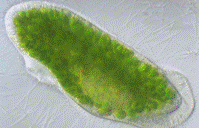Biological Sciences, School of

School of Biological Sciences: Faculty Publications
Document Type
Article
Date of this Version
2011
Abstract
Background: The establishment of the nuclear membrane resulted in the physical separation of transcription and translation, and presented early eukaryotes with a formidable challenge: how to shuttle RNA from the nucleus to the locus of protein synthesis. In prokaryotes, mRNA is translated as it is being synthesized, whereas in eukaryotes mRNA is synthesized and processed in the nucleus, and it is then exported to the cytoplasm. In metazoa and fungi, the different RNA species are exported from the nucleus by specialized pathways. For example, tRNA is exported by exportin-t in a RanGTP-dependent fashion. By contrast, mRNAs are associated to ribonucleoproteins (RNPs) and exported by an essential shuttling complex (TAP-p15 in human, Mex67-mtr2 in yeast) that transports them through the nuclear pore. The different RNA export pathways appear to be well conserved among members of Opisthokonta, the eukaryotic supergroup that includes Fungi and Metazoa. However, it is not known whether RNA export in the other eukaryotic supergroups follows the same export routes as in opisthokonts.
Methods: Our objective was to reconstruct the evolutionary history of the different RNA export pathways across eukaryotes. To do so, we screened an array of eukaryotic genomes for the presence of homologs of the proteins involved in RNA export in Metazoa and Fungi, using human and yeast proteins as queries.
Results: Our genomic comparisons indicate that the basic components of the RanGTP-dependent RNA pathways are conserved across eukaryotes, and thus we infer that these are traceable to the last eukaryotic common ancestor (LECA). On the other hand, several of the proteins involved in RanGTP-independent mRNA export pathways are less conserved, which would suggest that they represent innovations that appeared later in the evolution of eukaryotes.
Conclusions: Our analyses suggest that the LECA possessed the basic components of the different RNA export mechanisms found today in opisthokonts, and that these mechanisms became more specialized throughout eukaryotic evolution.


Comments
Published by Serpeloni et al. BMC Evolutionary Biology 2011, 11:7, Copyright 2011 Serpeloni et al, Used by Permission